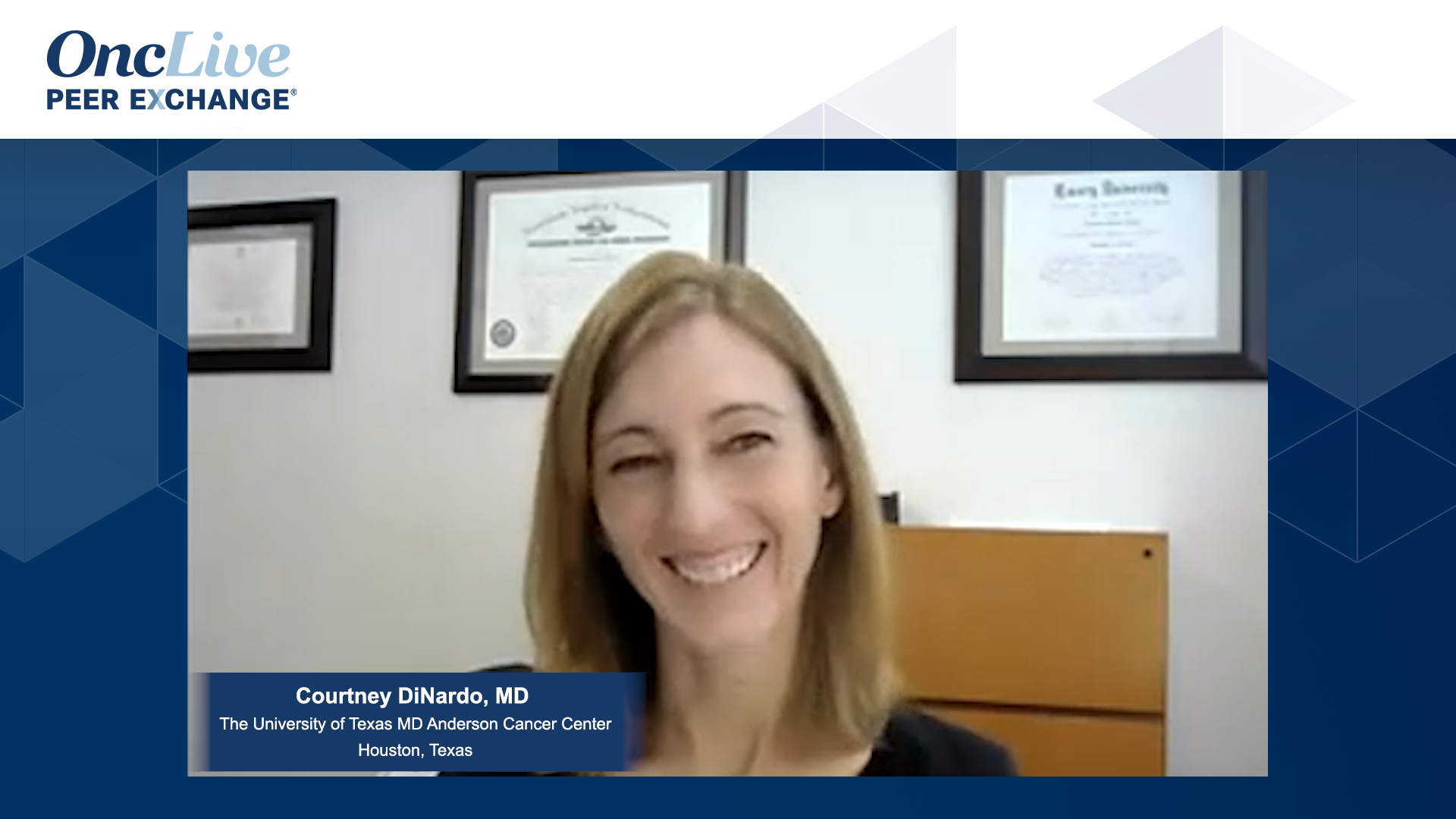- Advertise
- About OncLive
- Editorial Board
- MJH Life Sciences brands
- Contact Us
- Privacy
- Terms & Conditions
- Do Not Sell My Information
2 Clarke Drive
Suite 100
Cranbury, NJ 08512
© 2025 MJH Life Sciences™ and OncLive - Clinical Oncology News, Cancer Expert Insights. All rights reserved.
The Role of Allogeneic Stem Cell Transplant in AML
Dan Pollyea, MD, MS provides a high-level overview of the role of allogeneic stem cell transplant at first remission based on risk stratification, highlighting how to select patients for transplant.
Harry Erba, MD, PhD: Let's move on to the last section and Dan, let's start with you. Let’s have a high-level talk about the role of allotransplants in first remission based on risk stratification—not minimal residual disease (MRD) at this point, but risk stratification. Who goes to transplant?
Dan Pollyea, MD, MS: You know, at our institution [University of Colorado], we are pretty aggressive about transplanting patients and so really patients that we deem to be intermediate or poor risk will go to transplant. We will not consider favorable risk patients, who are otherwise deemed favorable by the European LeukemiaNet. For patients with adverse risk, we strongly recommend transplant. We recommend intermediate risk patients go, but we have patients who hear us out and then say, “No, thank you. I am going to take my chances with consolidation.” That is how we come down on the question.
Harry Erba, MD, PhD: Yes, I agree—intermediate risk, poor risk—they all should get a transplant consult and they should be encouraged to go to transplant. For patients with favorable risk, I think we do not need to do that necessarily. It may be still worth a conversation. Who on this call is using the nucleophosmin (NPM1) RT-qPCR (Real-time quantitative reverse transcription polymerase chain reaction) assay for MRD and making this decision about transplant?
Dan Pollyea, MD, MS: I think that is important because of—I think even you suggested this—what we call favorable risk when you are sitting with a patient diagnosis. If you clue them into what we mean by that—which is that somewhere less than half are going to be cured—I would be sitting in that chair, thinking that that is favorable risk. Many of these patients will relapse until we have a tool like a deep sequencing test for NPM1. In remission, at some point—during consolidation, usually—after their second cycle, we will check for that. If they are still MRD positive in that time frame, I do not think there is any reasonable chance that they are going to be cured without a transplant. That is a patient we will advise to come off the non-transplant track and go on to the transplant which is why—back to the beginning—even for a patient with favorable risk, like you said, Harry, there should be a transplant discussion and workup planning because you might have to quickly pivot. It is not that surprising that some patients with favorable risk do not do well because it's all relative. Favorable risk is not all that favorable in our field.
Harry Erba, MD, PhD: I agree with all those comments and using MRD to help make that decision, especially for patients with favorable risk who we wouldn't normally think about transplant. The only caveat to that would be looking at RT-qPCR for the 821 or version 16, where there are a little bit more complications when trying to judge who should go to transplant or not based on the kinetics of those reductions. Clearly, it is not wrong to get a transplant consult for every patient with acute myeloid leukemia, including those who you may not think are necessarily a transplant candidate. We are transplanting many more patients in their 70s now, right Vinod?
Vinod Pullarkat, MD:Yes; age has become less of an issue with the haploidentical transplants and donor availability has become less of an issue. Right now, there are very few patients who are truly ineligible, so I agree that those patients—at any intermediate risk, high risk, and some with favorable—will benefit from an evaluation. 821 is 1 area I struggle with. I do not know when they relapse. The outcomes are bad. They had long-term survival at only about 50%, so I think that, to Dan's point, it may not necessarily be all that favorable.
Harry Erba, MD, PhD: You are right. There is a difference between version 16 and 821.
Transcript Edited for Clarity
Related Content:





